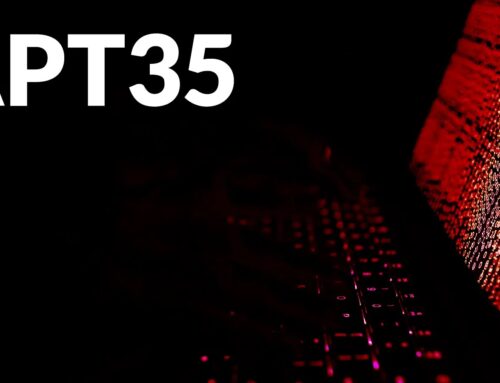
Threat Actors Allegedly Listed Veeam RCE Exploit for Sale on Dark Web
The digital landscape is a constant battleground, and the tools designed to protect us can, at times, become targets themselves. Recent reports from the dark web paint a concerning picture: a remote code execution (RCE) exploit allegedly targeting Veeam Backup & Replication, a critical component in many organizations’ data protection strategies, has been listed for sale. This development underscores the persistent threat actors pose to even the most robust enterprise software and highlights the urgent need for vigilance and proactive security measures.
The Alleged Veeam RCE Exploit: A Closer Look
According to claims circulating on the dark web, specifically via a seller identified as “SebastianPereiro,” a new RCE exploit is being offered that targets specific Veeam 12.x builds. While the full details of the exploit, dubbed “Bug of […]” (the full name is redacted due to the nature of the source), remain undisclosed, the very notion of a publicly available RCE for a widely used backup solution is cause for significant alarm. A successful RCE exploit could grant an attacker complete control over the compromised Veeam server, leading to devastating consequences such as:
- Data Exfiltration: Access to an organization’s critical backup archives, potentially containing sensitive customer data, intellectual property, and internal records.
- Data Tampering or Deletion: The ability to corrupt, encrypt, or completely wipe out backup data, rendering recovery impossible and causing severe operational disruption.
- Lateral Movement: A compromised Veeam server often has privileged access to other systems within the network, serving as a launchpad for further attacks and deeper penetration.
- Ransomware Deployment: The ability to deploy ransomware across the entire network, encrypting systems and backups.
Understanding Remote Code Execution (RCE) Vulnerabilities
A Remote Code Execution (RCE) vulnerability is one of the most severe types of security flaws. It allows an attacker to execute arbitrary code on a remote machine. For software like Veeam Backup & Replication, which often handles critical data and network access, an RCE can be catastrophic. These exploits often leverage weaknesses in input validation, deserialization processes, or insecure configurations, enabling threat actors to bypass security controls and gain unauthorized command execution capabilities. The alleged exploit targeting Veeam 12.x suggests a specific flaw within these newer builds that threat actors are actively seeking to monetize.
Remediation Actions and Proactive Defense
Given the severe implications of an RCE vulnerability, especially one targeting a critical system like Veeam, immediate and decisive action is paramount. While official details from Veeam regarding this specific alleged exploit are awaited, organizations running Veeam Backup & Replication 12.x builds should take proactive steps:
- Monitor Veeam’s Official Security Advisories: Regularly check Veeam’s official security bulletins and knowledge base for any announcements regarding new vulnerabilities or patches. Veeam’s response will be critical in confirming the exploit’s validity and providing specific mitigation.
- Apply Patches and Updates Immediately: Ensure that all Veeam Backup & Replication installations are fully patched and running the latest stable version. Security updates often contain fixes for critical vulnerabilities, even if not directly related to this specific alleged exploit.
- Implement Principle of Least Privilege: Review and enforce the principle of least privilege for all Veeam service accounts and administrative users. Restrict access to only what is absolutely necessary for operations.
- Network Segmentation: Isolate Veeam backup servers on a dedicated network segment, separate from the production network. This can limit lateral movement in case of a compromise.
- Strong Authentication and MFA: Implement multi-factor authentication (MFA) for all Veeam access, especially for administrative accounts.
- Regular Security Audits and Penetration Testing: Conduct regular security audits and penetration tests on your Veeam infrastructure to identify potential vulnerabilities before threat actors can exploit them.
- Monitor Logs and Anomalous Activity: Implement robust logging and monitoring for your Veeam environment. Look for unusual access patterns, failed login attempts, or unexpected command executions.
- Backup Best Practices: Beyond Veeam’s functionalities, ensure you have an “air-gapped” or immutable backup strategy for critical data, making it inaccessible to compromised systems.
Relevant CVEs
While this alleged vulnerability is currently unconfirmed with a specific CVE, it’s crucial for organizations to stay updated on existing Veeam vulnerabilities that could be related or exploited in similar ways. Some past Veeam vulnerabilities of note include:
- CVE-2023-27532: A critical vulnerability in Veeam Backup & Replication allowing unauthenticated users to gain access to backup infrastructure information.
Tools for Detection and Mitigation
Proactive security requires the right tools. Here are some categories of tools that can assist in securing your Veeam environment:
| Tool Name/Category | Purpose | Link |
|---|---|---|
| Veeam ONE | Monitoring, reporting, and capacity planning for Veeam environments. Can help detect unusual activity. | https://www.veeam.com/veeam_one.html |
| Vulnerability Scanners (e.g., Nessus, Qualys) | Automated scanning for known vulnerabilities in Veeam servers and underlying OS. | https://www.tenable.com/products/nessus |
| Endpoint Detection & Response (EDR) Solutions | Monitors endpoints (including Veeam servers) for malicious activity, anomalous behavior, and potential RCE attempts. | (Provider-specific, e.g., CrowdStrike, SentinelOne) |
| Security Information and Event Management (SIEM) | Aggregates and analyzes security logs from Veeam and other systems to identify threats and aid in incident response. | (Provider-specific, e.g., Splunk, Microsoft Sentinel) |
| Network Intrusion Detection/Prevention Systems (NIDS/NIPS) | Monitors network traffic for suspicious patterns and known attack signatures targeting Veeam ports or services. | (Hardware/Software-specific, e.g., Snort, Suricata) |
Conclusion
The alleged listing of a Veeam RCE exploit on the dark web serves as a stark reminder of the continuous and evolving threats organizations face. While the exploit’s authenticity and specifics are yet to be fully validated, the potential impact on organizations relying on Veeam Backup & Replication necessitates a heightened state of alert. Cybersecurity professionals must prioritize rigorous patching, implement robust security controls, and maintain vigilant monitoring of their backup infrastructure. Proactive measures, coupled with a responsive incident plan, are crucial in safeguarding critical data against sophisticated threat actors.





